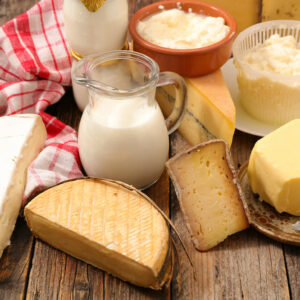8 common mistakes to avoid while washing a car

Cars are complex machines that include several components and panels. This is why, cleaning cars can be a deceptively complicated thing to do. Unsurprisingly, people make several common mistakes while washing their cars. These mistakes can somewhat spoil a vehicle’s appearance. Many individuals rely on automobile cleaning professionals to get the job done for them. Nevertheless, if one chooses to clean their cars by themselves, here are some of the common cleaning mistakes to avoid:
Washing a car under direct sunlight
A common misconception associated with cleaning cars is that doing it under direct sunlight is effective as the heat helps dry the surfaces quickly. However, doing so actually spoils a car’s appearance. When one cleans a car and leaves it under the blazing sun, the water evaporates faster than one can wipe the watermarks off. This leaves the watermarks on the car’s body and, after they dry, the watermarks tend to give the car’s body a flaky appearance.
Instead, one can simply wait for the cooler times during the day to clean their vehicle. If possible, one should use the early morning or late evening period to do the job. Also, one should avoid keeping their vehicle out in the sun for too long. A car cover can help in the absence of a shaded parking lot.
Washing parts in the wrong order
One might wonder what the order of cleaning has to do with the overall washing process. The answer’s quite simple: the tires are the dirtiest components of a car, so washing them last can result in sand and mud getting stuck onto the body, which one may have cleaned first. To avoid double work, people can wash the tires first, followed by a quick rinsing of the overall body with water to get the dirt out. Washing the car in this order (tires first; body later) reduces the possibility of leaving scratch marks on the vehicle’s body.
Leaving on wax for too long (or wiping it too soon)
Using wax is a critical aspect of car cleaning. It is mainly used to give one’s car a gleaming finish. However, people tend to be confused about the time the wax needs to be left on before wiping it off. The answer differs for different products. For instance, certain wax products can be wiped off in about a minute or two after application. On the other hand, others need to stay on the body for longer. Certain products work have a strict “‘no water after application” rule, while others may ask car owners to apply a second coat only 12 to 24 hours after wiping off the first one.
Quite simply, people need to read the instructions on a given product and follow them to a T. If one does not follow those instructions, then the paint layer of their vehicle can get damaged in the long run.
Using excess cleaning product
As is the case with any cleansing agent, car cleaning products also need to be used in moderation. Whether one uses a wax layering agent or an interior protectant, applying lesser quantities is always preferable to using them excessively and then dealing with the consequences. Using too much wax offers no additional benefit and makes it incredibly challenging to wipe it off later. Similarly, using too much window cleaner can result in more visible streaks on a car’s windows. Consulting a cleaning professional is a wise thing to do when one is unsure about how much product they need to use for the task.
Using household products for cleaning
This is arguably the most common car wash mistake one can make. Believing it to be convenient, people tend to use dishwashers, dish scrubbers, glass cleaners, abrasive floor cleaners, bleach, and fabric-washing detergent to wash their cars. Unfortunately, these products are likely to contain ingredients that strip off the protective wax layer from the paint of one’s car, making it more vulnerable to dents and scratches. Many home cleaners contain ammonia, a chemical that leads to cracks in a car’s windows and mirrors. Therefore, it is recommended to purchase specialized cleaning products suited for vehicular washing.
Relying on leather or vinyl care wipes for interior cleaning
Using only leather or vinyl care wipes to clean a car’s interiors can spoil the interior ambiance and appearance. Using these wipes to clean flat surfaces like a console lid or a glove box is fine, but such wipes will not effectively properly clean other, less flat surfaces, such as cupholders or internal door panels. For such surfaces, liquid cleaners are ideal. These products cleanse all the hidden crevices and areas where standard wipes do not reach adequately.
Using a single bucket or cloth while cleaning
This is one of the most rookie car cleaning errors. A car, like any other object or property, contains several dirty and filthy parts and panels. When one cleans their car with the same cloth and bucket of water repeatedly, the dirt from the cloth is bound to transfer to the water, and then one is essentially trying to clean with dirty water. Plus, the dirt and filth particles transfer from one area of the vehicle to another. Therefore, it is advisable for people to use different buckets, different cleaning clothes, and different water for the washing job.
Using corrosive cleaners
One must carefully read the ingredient list in a product when they purchase a cleaning solution or wipes. Sometimes, people may hastily select cleaning products and, as a result, buy solutions with specific corrosive agents. These products can gradually damage the body of their car. This is why one must research every cleaning product and ingredient closely before purchasing any product to wash their car. If required, one can research the right products online or ask a car mechanic for advice.



